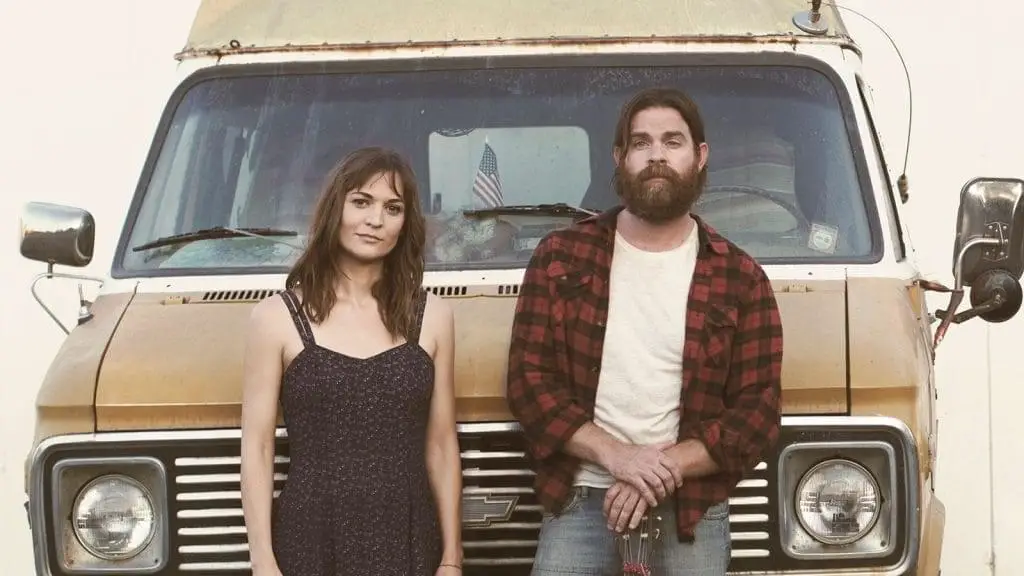
Yasuaki Nakajimi, a native of Japan and a current Brooklynite, screened the first twenty minutes of his film “After the Apocalypse”, which, a few weeks ago may have served as a gentle – even somewhat dated – reminder to give peace a chance. Now the 16mm black and white feature length film about the aftermath of a nuclear attack in New York delivers ominous subtext. Nakajimi is nearly speechless when asked to comment on the irony.
“It’s just so weird,” he said repeatedly. “Just weird.”
Inspired by his childhood visit to Hiroshima, Nakajimi set out to make a film that dealt with “the basic necessities of life after a nuclear attack.”
“In the film they are getting back to basics,” he explained. “They search for food, water, shelter, affection. . . the basics of life.”
The film opens with Nakajimi peering out from the goggles of a gas mask. Soon he removes the mask and begins searching for signs of life. He finds children’s toys, remnants of domestic life and, finally, female companionship. There is no dialogue in the film. Rather, Nakajimi has the actors drive the story through expressions and movements. It’s as if the cataclysmic event has liberated them from cumbersome language. This way they find and seek exactly what they need, no more and no less, and without expectations.
On September 11, Nakajimi was on his way to work when the World Trade Center was struck by hijacked airplanes.
“I saw it,” he remembered. “I was on Chamber Street. There was this huge sound and I looked up and saw the explosion.”
As for the relevance of his film to the recent events, Nakajimi believes the film, in its attempt to underscore the most important ingredients for life, delivers a powerful message.
“We’ve got to take care of each other,” he said. “What’s happening now is so interesting. People got united. But we should always be that way. We have to get back to basics.”
Not all the films were as bleak. Some of the lighter fare included Bryan Harston’s “Emale”, a comedy about a soon-to-be-married bachelor (Daniel Roebuck) who enters a “reality” contest that requires him to imprison himself in his house with nothing more than a laptop computer. In similarly irreverent fashion, filmmaker Jennifer Arnold poked fun at the “American Mullet”, an in-depth look at the puzzling hairstyle phenomenon.
Laughter, however, stopped once you broke from the buzzing lobby of the Anjelika or the cacophony of the Puck Building on Lafayette Street where seminars were held and where many vendors, including Kodak, Sony and Apple, demonstrated their products.
Heading straight down Broadway from the Anjelika’s doorstep at Houston Street, you begin to smell the devastation at Canal Street. At Chamber Street the pylons and various law enforcement and construction vehicles become visible and soon you find yourself in a bottleneck of police, firemen, FBI, and curious onlookers. The air is thick with dust and burns your eyes. Sidewalk prayer kiosks are situated near the site and it’s difficult to find anyone who is not wearing, carrying or waving the American flag. Cameras click and people move in slow motion as they examine the wreckage. The scene is the ultimate affirmation for a filmmaker. Yes indeed, the American people are spectators. Not only do they want to see everything, they need to see everything, especially something this catastrophic. The reason for this is not rooted in a need to be entertained or captivated somehow. A view of the wreckage appears to act as a jolt of inner strength and resolve. The pilgrimage to reality and the desire to see for oneself offers a dose of courage.
Yet, one man claims he saw too much…
Get the whole story in part three of IFP MARKET 2001: WHAT IS THE ROLE OF THE FILMMAKER NOW?
